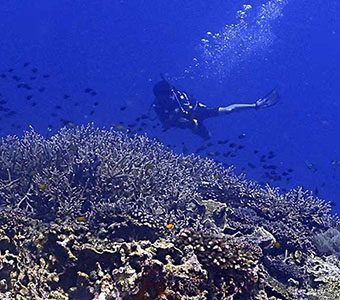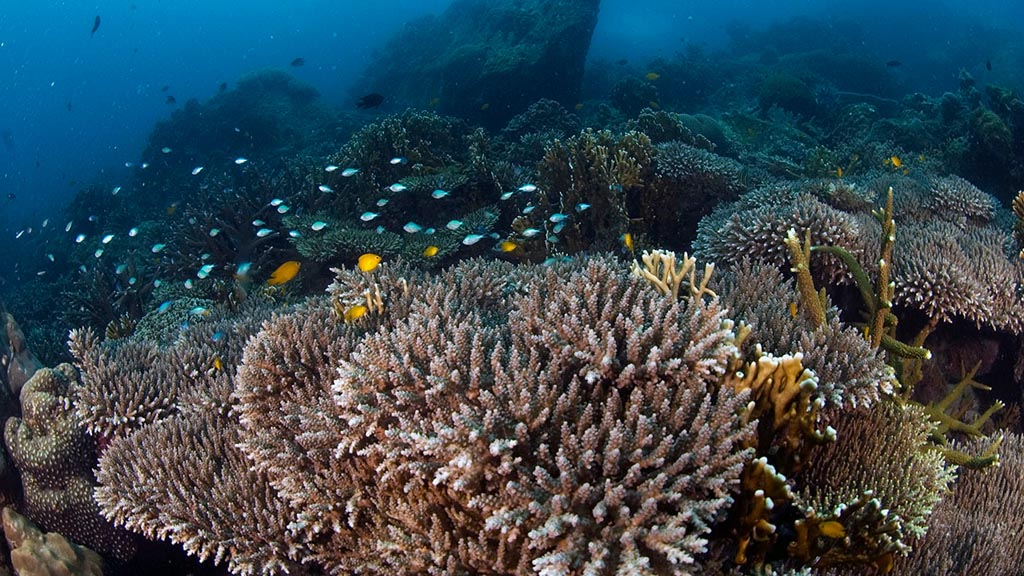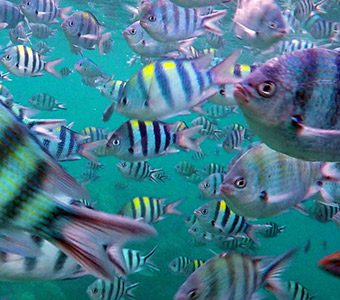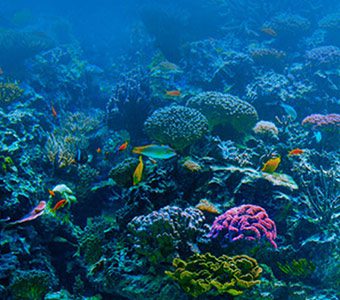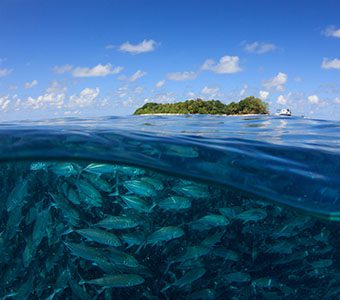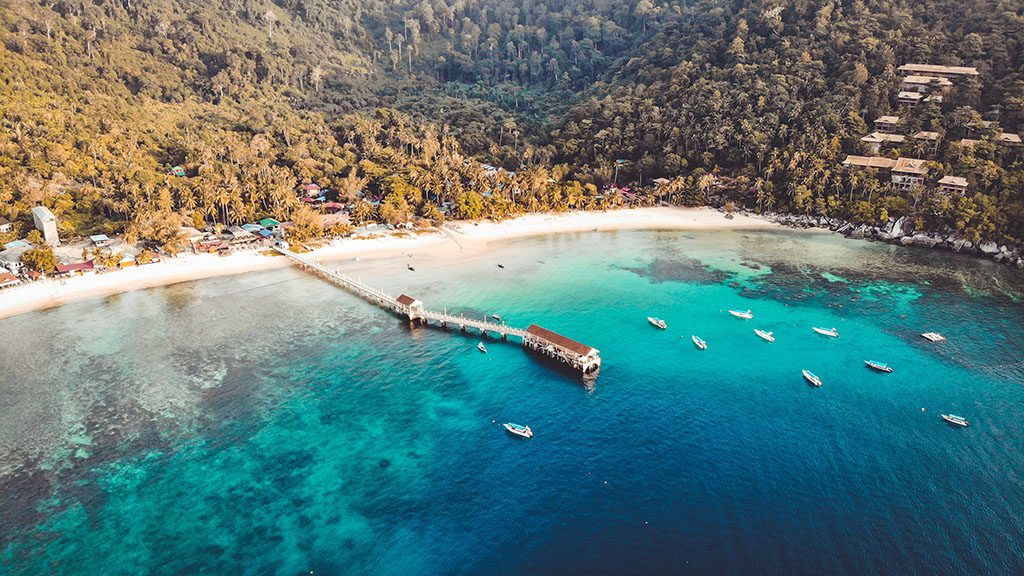
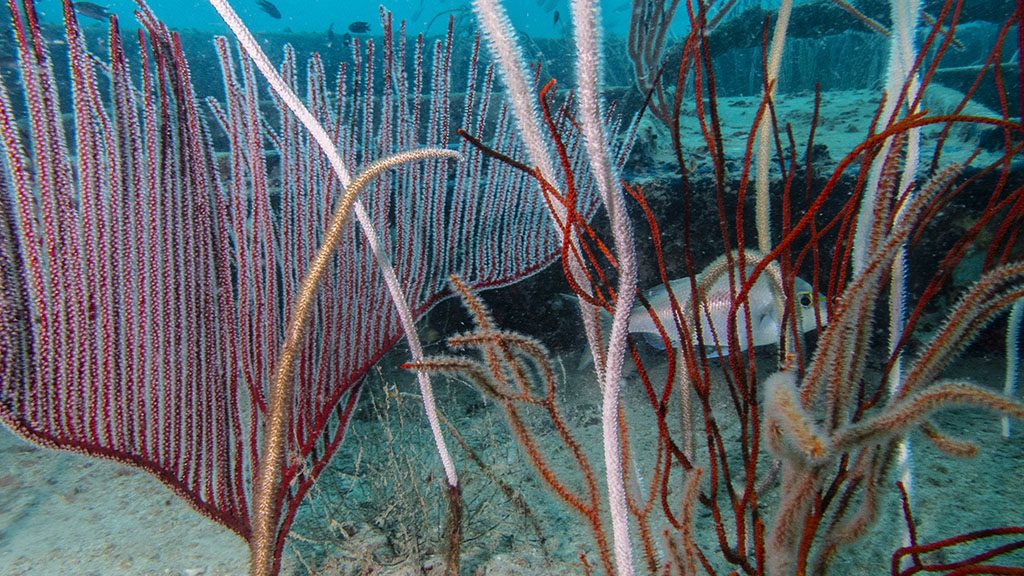
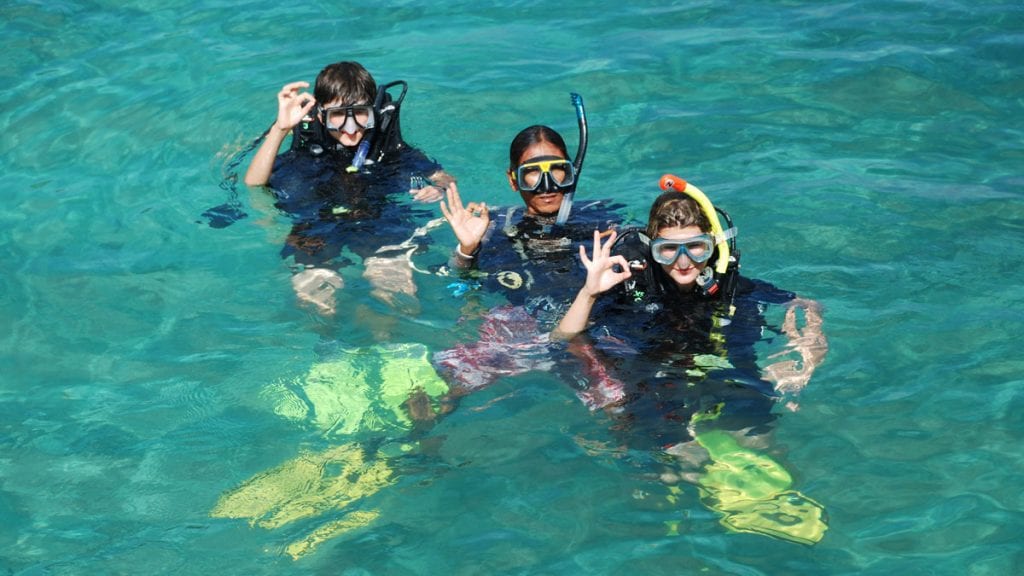
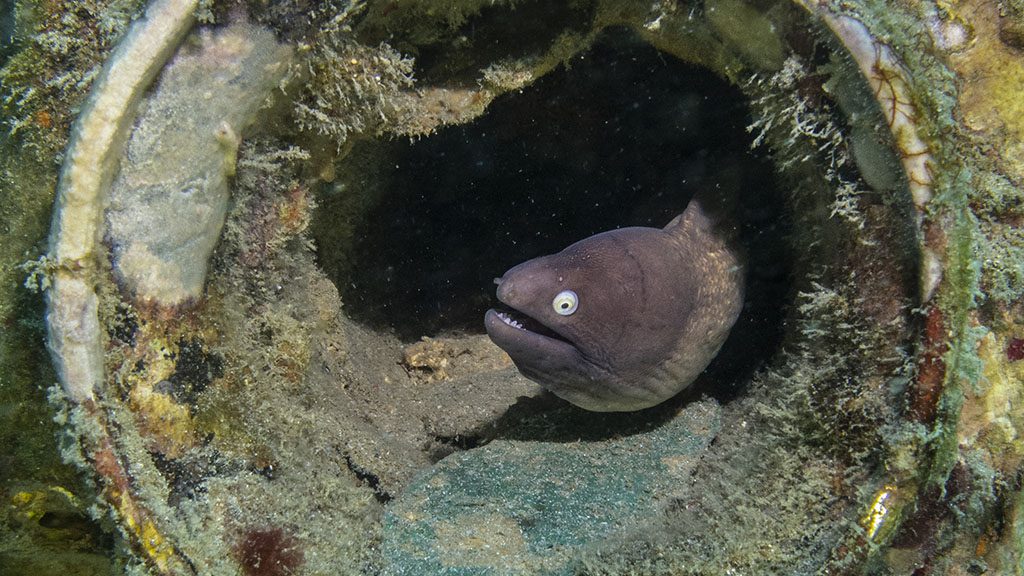
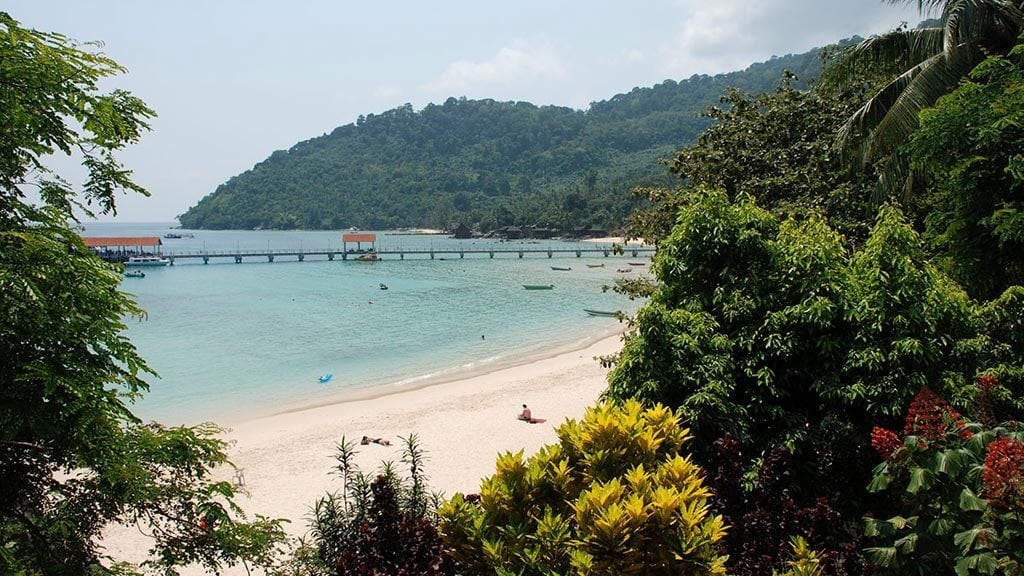
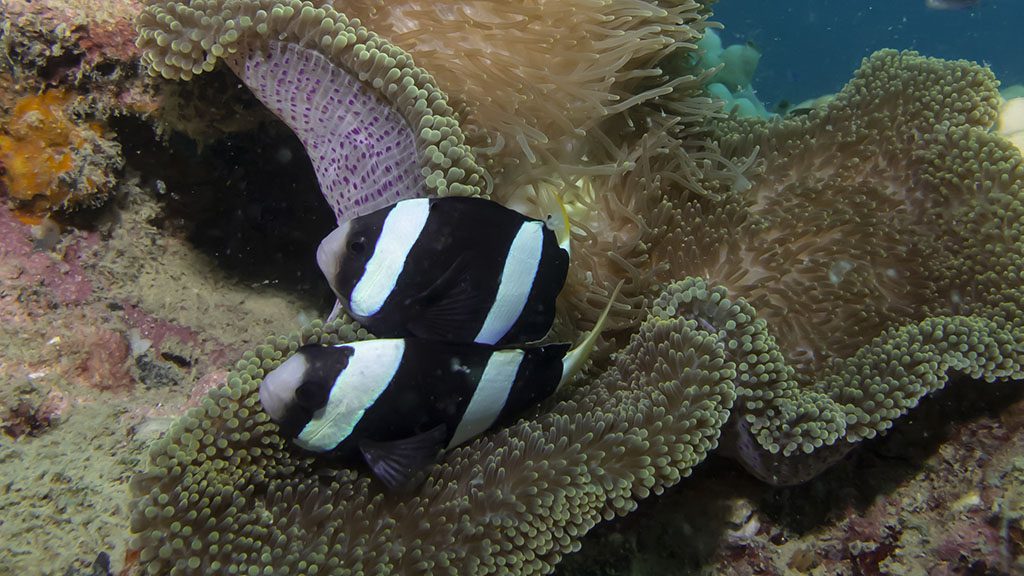
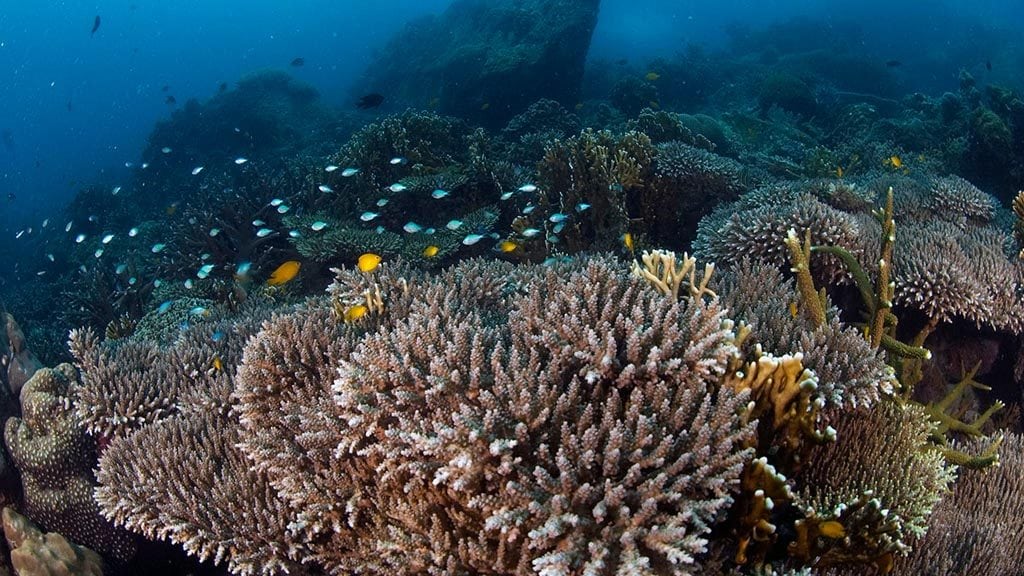
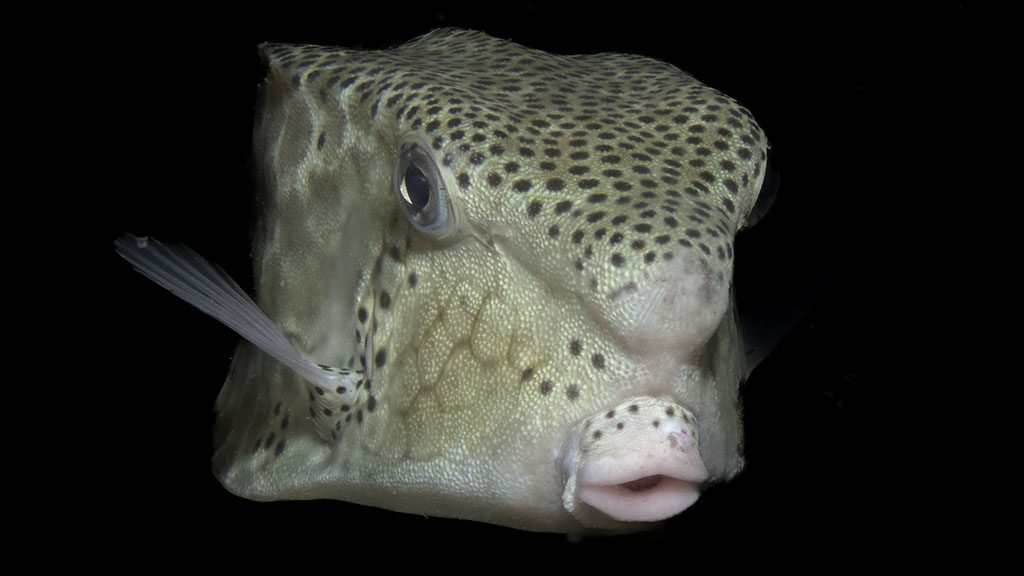
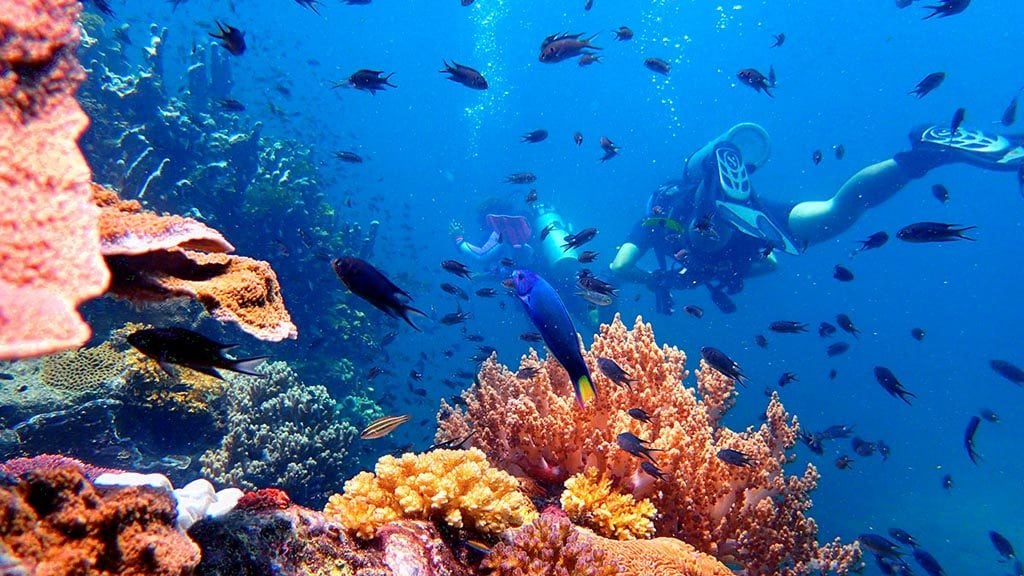


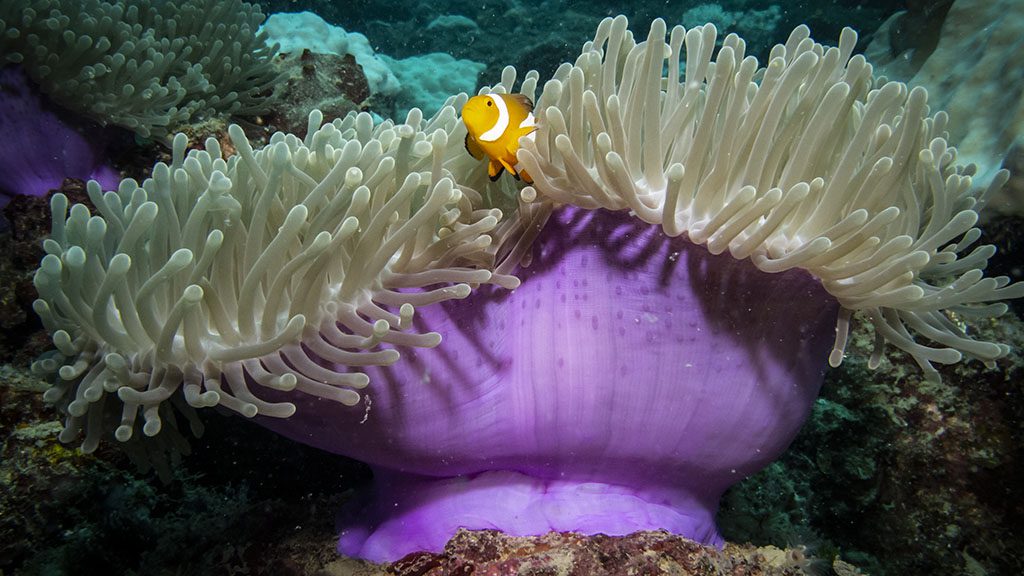
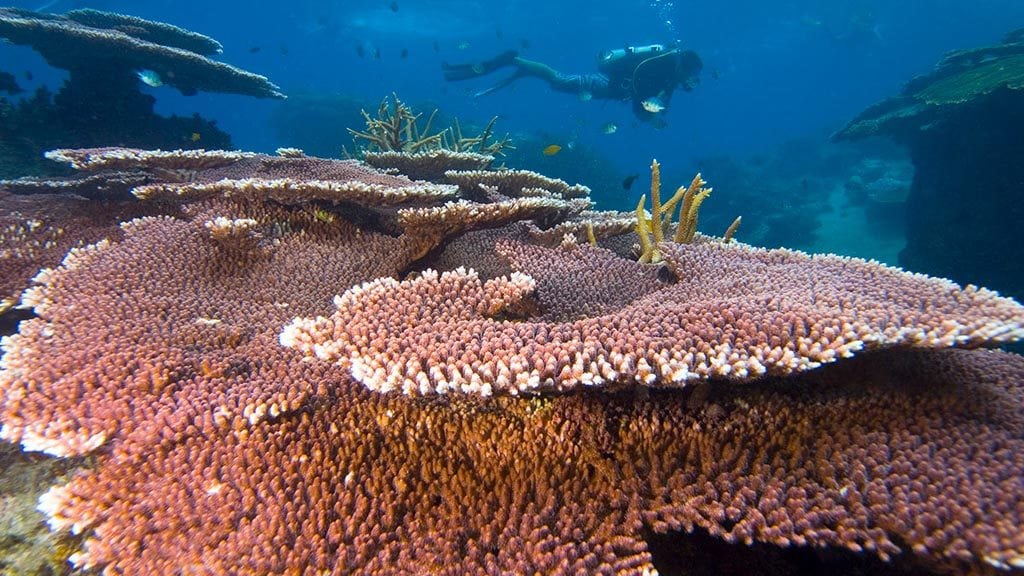
Tioman
Tioman is best known for its scuba diving. Tioman Island is sparsely inhabited with just 8 villages and 18 beaches, most of them only accessible by boat and pristine. The low population and lack of urbanisation, plus the fact that the island sits within its own marine park means that there is fantastic scuba diving on its excellent reefs. There are two main centres as far as scuba diving Tioman is concerned and they are Salang Bay on the northern tip, and Air Batang Bay (aka ABC) on the west coast.
Salang Bay is small and compact, so resorts, restaurants, burger stalls, mini markets and dive shops are literally next to each other. The bay is surrounded by a beautifully dense rainforest and its shallow lagoon is perfect for snorkelling and scuba diving – Salang has some amazing shore dives. The jetty is teeming in fish life, as are the southern house reef, the northern house reef and the remains of Salang Wreck.
ABC or locally known as Kampung Air Batang is a long stretch of rocky shoreline a few kilometres north of the main village Tekek. It is a quiet place where travellers can find small resorts offering a variety of room categories ranging from backpacker-style fan rooms to our luxury executive rooms. It has a number of reefs and wrecks just off shore.
Perhentian Islands
The Perhentian Islands are located on the east coast of Malaysia. A lush tropical island fringed by white sand beaches, Perhentian has long been a popular destination amongst European tourists. A land without winter, air temperatures range from 25-32C degrees. Meanwhile, water temperature averages between 28 and 31C degrees (wetsuits definitely not required!)
Diving in Perhentian could be described as easy and with plenty to look at. As such, it is well suited to beginner, novice, intermediate and Advanced divers. Depth rarely exceeds 25 metres.
Dives feature coral reefs, swim-throughs, wrecks and muck substrates. Visibility can exceed 25 metres, but the water can at times be heavy with particulate (especially following rain). This can make wide angle photography very challenging. Macro photographers will be on the lookout for nudibranchs and tiny shrimp. Anemones housing around seven species of clownfish provide the most vibrant pops of colour.
The Perhentian dive season spans from March to October, while peak season is May to August. Monsoon season (from November to February) is to be avoided due to the roughness of the sea.
Tioman Island (Pulau Tioman in Malay language) is located 32km off the east coast of Peninsular Malaysia. The island is some 39km long and up to 12km wide. The Perhentian Islands are further north, and requires a flight from Kuala Lumpur (KL) to Kota Bharu (KBR) – about an hour’s flight. Then it’s around 70 mins car ride to Kuala Besut Jetty, followed by a 25-30 min small taxi boat ride across to Coral Bay.
Getting There
Tioman Island is in the state of Pahang – a 2 hour ferry ride to the east from either Mersing or Tanjung Gemok on the mainland. You can get to either port from both Kuala Lumpur and Singapore by coach service.
From Kuala Lumpur: There are coaches leaving directly from Kuala Lumpur to Mersing and Tanjung Gemok departing several times daily from Terminal Bersepadu Seltatan (TBS). The journey takes approximately 6 hours and costs between MYR 31 – 45 each way.
From Singapore: Coaches leave directly from Singapore and depart several times daily. It takes about 4 hours to get to Mersing and 4½ hours to Tanjung Gemok. The cost is SGD 30 – 40 each way. There is a coach that departs just before midnight and gets you to the ferry at 4am (well before the first sailing at 8am). ABC is usually the fourth ferry stop, and Salang Bay is the last. If you can afford it, you can also fly directly to Tioman.
The Perhentian Islands require a flight from Kuala Lumpur (KL) to Kota Bharu (KBR) – about an hour’s flight. Then it’s around 70 mins car ride to Kuala Besut Jetty, followed by a 25-30 min small taxi boat ride across to Coral Bay.
There are numerous dive operators scattered around Tioman Island, but B&J Diving has two dive centres, one in ABC and one in Salang, three boats, and a big team of dive guides and instructors eager to take you to all their favourite places. They also have the Tioman Dive Resort – which offers some of the smartest accommodation, right next door to their diver centre in ABC. As a PADI 5 Star IDC they offer all the PADI training courses.
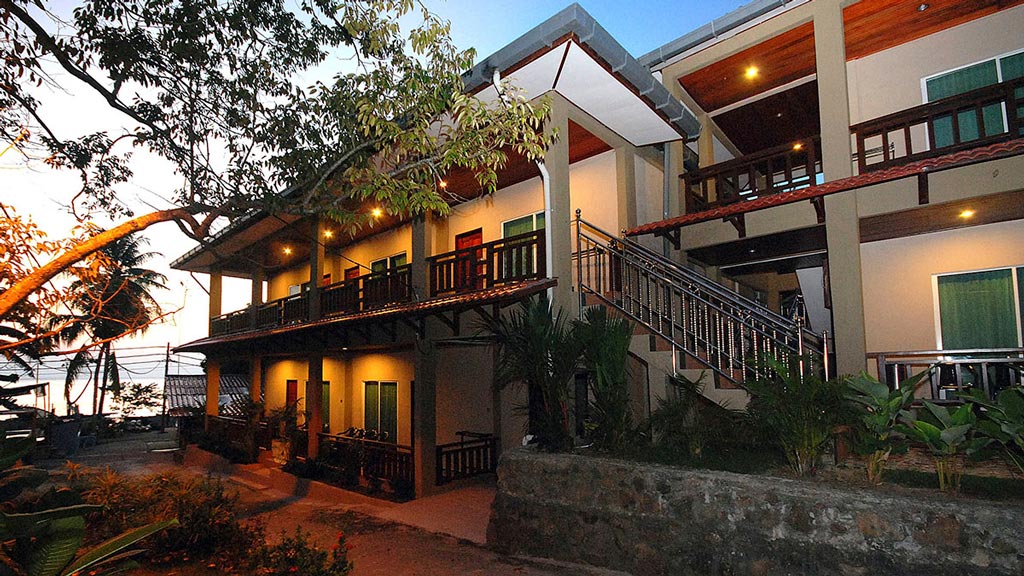
Amongst the twenty or so operators on Perhentian, Ombak is the only three-in-one dive centre, resort accommodation and cafe owned by a single operator. Ombak Lodge, Ombak Divers and Ombak Cafe were incorporated in 2011. The dive centre has three dive boats, and a very experienced crew. Ombak Dive Centre facilitates a wide range of courses are facilitated through SSI. These include: Try Scuba, Open Water, Advanced, Photo and Video course, Night Diving, plus various Dive Guide and Instructor accreditations. Children as young as 6 can enrol in the Junior Explorer try dive scuba program.

Seasons
The diving season for Tioman Island starts on 1st February and ends by early November. Tioman is pretty much shut down over monsoon (Nov-Jan).
- February-March: Mating season of the Pharaoh Reef Cuttlefish
- March-May: great visibility, averaging between 15m and 30m
- June-August: Summer season where visibility usually drops to around 8m to 12m (though diving is still great)
- September-November: great visibility, averaging between 15m and 30m
The Perhentian dive season spans from March to October, while peak season is May to August. Monsoon season (from November to February) is to be avoided due to the roughness of the sea. Currents are fairly mild throughout the season.
Temperature
The weather on Tioman Island is fine all year around. On most days you can expect sunny skies and little wind with a few clouds overhead. As Tioman Island lies in the tropics and is covered by dense rain forest, brief rain showers are common but usually last less than an hour.
- Average air temperature: 32°C
- Average water temperature: 27 to 29°C
Staying Connected
Free WiFi is available at our dive centres but bear in mind the connection on the island is very slow.
The most reliable telecom provider for Tioman is Celcom. Purchase a prepaid card if you prefer to have your own internet data plan and/or if you need to make phone calls.
Other Activities
Snorkeling
The house reefs in Salang and ABC also offer some fantastic snorkelling and all you need to do is rent some snorkelling gear and jump in the water.
If you’d rather explore the reefs at Coral Island, Renggis Island or the Marinepark then head to one of the local operators. They offer various trips by speedboat – costs depend on the number of participants and the locations
Rainforest Trekking
Tioman is densely covered with some of the oldest rainforest in the world. Exploring the jungle is a must if you’ve never hiked in a rainforest before. There are several short and long trails available from both Salang Bay and ABC to different bays, ranging between 2 to 6 hour round trips.
Sea Kayaking
Sea kayaking is a fantastic adventure. If you’re fit enough, you can kayak all the way to famous Monkey Bay or Turtle Beach, but don’t try to attempt to go all the way to Coral Island – it’s further than it looks. Costs for kayak rental are in the range of MYR 15.00 per hour.
Beach Volleyball
If you fancy a high energy activity after a fantastic day of diving, then why not join the local boys and girls for a round of beach volleyball? There are 2 nets available in Salang Bay and games are on every day after 5pm.
Tioman Island is home to some of the healthiest coral reefs in Southeast Asia and boasts a myriad of marine life. It is the best place to dive the most beautiful coral gardens in the South China Sea, swim with a huge variety of tropical reef fish, turtles, sharks, cuttlefish and search for nudibranchs in one of the best macro spots in the world.
Tioman Island lies in a dedicated Marine Park and as such there’s a Marine Park fee payable to the local authorities. This must be done in cash (Ringgit) at the jetty of either Mersing or Tanjung Gemok. Some of the best known sites are around Coral Island (Pulau Tulai) in the north. Read our guest post on the delights of diving Tioman.
Perhentian Islands
Dives feature coral reefs, swim-throughs, wrecks and muck substrates. Visibility can exceed 25 metres, but the water can at times be heavy with particulate (especially following rain). This can make wide angle photography very challenging. Macro photographers will be on the lookout for nudibranchs and tiny shrimp. Anemones housing around seven species of clownfish provide the most vibrant pops of colour.

The Perhentian dive season spans from March to October, while peak season is May to August. Monsoon season (from November to February) is to be avoided due to the roughness of the sea.

